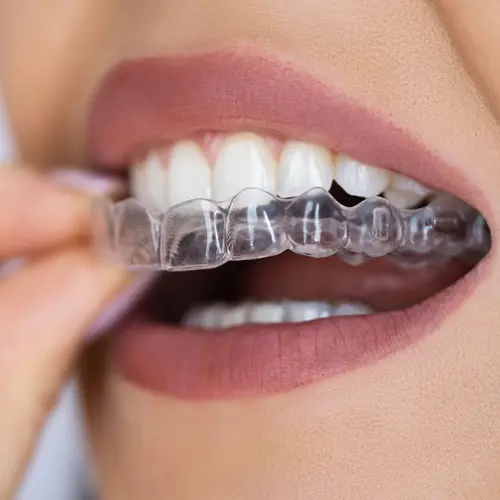One-quarter of all dental patients who wear braces are adults. Other adults should but don’t get their teeth corrected because they'd be embarrassed about wearing braces. If you are in this group of adults, then lingual braces may be right for you.
What Are Lingual Braces?
Lingual braces are a type of invisible braces. Other invisible orthodontic appliances on the market are clear aligners or plastic or ceramic braces. But "lingual" braces are fixed to the back, or lingual side, of your teeth, closer to your tongue.
Advantages of Lingual Braces
Invisibility. The parts that make up braces — the brackets, wires, and elastic bands — are all mounted on the back of your teeth. Other people can’t see them unless you open your mouth wide.
Possibly less pain. Studies differ on this idea but seem to favor lingual braces.
In a study of 130 adults with different types of orthodontic appliances, researchers found that those who wore lingual braces had the lowest level of pain throughout their first month of treatment.
Other researchers found that those wearing lingual braces tended to have more tongue pain, while users of conventional, or labial, braces had more lip and cheek pain. But in a study of 60 users of labial and lingual braces, there were no significant differences in pain ratings, and the pain reduced over time.
Another study of 68 adults found that those with lingual braces had more severe pain and the longest recovery compared to those using labial braces and clear aligners. Many of those using lingual braces continued to have eating problems after two weeks.
Any type of braces will cause you some mouth pain at first. Around 90% of people with braces say that their main problem is pain and discomfort.
But your discomfort will go away eventually. In the meantime, your orthodontist may recommend using orthodontic wax, over-the-counter pain medication, and eating cold foods.
Fewer lifestyle changes. Wearing braces of any type will mean some changes at first. You may have to first eat soft foods, learn how to clean your braces, and more. But generally, lingual braces may mean fewer lifestyle changes than conventional, labial braces.
For example, if you wear labial braces and play a flute or saxophone, you may have to adjust the way you play and clean your instrument more often. Wearers of labial braces often take longer to get back to playing the trumpet and French horn.
Because lingual braces sit on the back of your teeth, you don't have to make any changes to your mouth or lip positions when playing woodwind or brass musical instruments.
You may be able to kiss more easily if you wear lingual braces. There are no brackets on the front of the teeth to contend with. Orthodontic wax on the bumpier surfaces of your brackets can help if you have problems.
Custom design. Orthodontists can customize lingual braces with computer-aided design and computer-aided manufacturing (CAD/CAM) software.
Experts studied 42 users of lingual braces and found fewer speech and chewing problems among those who had customized lingual brackets than among those who wore premade brackets. Those using prefab brackets also had more issues with tongue pain and pressure sores.
Disadvantages of Lingual Braces
Orthodontist training issues. Lingual braces require completely different techniques from labial braces, but many orthodontic programs don’t offer clinical training in lingual appliances. So you may have trouble finding an orthodontist trained to apply them.
Effects on speech. Wearing braces, whether labial or lingual, will affect your speech at first.
But some research shows that you may have more trouble with speech if you're wearing lingual braces. A study of 24 adults found that lingual braces wearers continued to have difficulty even after a month. Those who wore labial braces recovered their speech within a week.
Another study showed that those wearing lingual braces continued to have problems with pronunciation even after 3 months.
Even so, speech issues gradually decrease over time.
Expense. Lingual braces are usually more expensive than labial braces, especially if you use custom-made lingual braces.
While costs vary among orthodontists, regions, and how much work is involved, you may end up paying twice as much for premade lingual braces as for labial braces.
Conventional metal braces cost around $3,000 to $7,000. Lingual braces can cost as much as $10,000. They're also more expensive than other types of invisible braces. For instance, the average cost of ceramic braces is between $4,000 and $8,000. Plastic braces are likely to cost between $5,100 and $7,000.
To cut the cost of your braces, consider a combination: wearing lingual braces on your upper teeth and conventional, labial braces on your bottom row.
Cleaning problems. With lingual braces, it may be a bit harder to maintain your oral hygiene. You may find that food particles stick between the brackets of your lingual braces. Compared to labial braces, the lingual brackets are positioned closer together. Using a water flosser can help you remove any stuck food.
